- Products
-
-
Product Features
-
Explore More
-
-
- Solutions
-
-
By Industry
By Department
-
By Business Need
-
-
- Learn & Support
-
-
Product Education
-
Product Support
-
-
- Resources
-
-
Insights
Events
-
-
- Partners
-
Nature Coast Women’s Care & Family Medicine developed an automated patient intake process using Laserfiche Cloud. As a tech-forward, comprehensive family healthcare center that offers a wide range of services — including obstetrics, gynecology, preventative services, aesthetic medicine and family medicine — Nature Coast modernized its patient experience using digital forms, and shortened patient wait times by 75%. Accelerating patient processing proved to be an especially significant benefit as COVID-19 arrived in the U.S. and it became more important to lessen the amount of time patients were in the waiting room.
Located in Tallahassee, Florida, Nature Coast Women’s Care & Family Medicine was started by Dr. Chukwuma M. Okoroji to advocate for patients’ health throughout all stages of their life. The practice prides itself on combining technology innovation with a proactive approach to patient care. The practice’s strategic planning led to the implementation of Laserfiche Cloud as a means to reimagine the patient intake process.
“Before using Laserfiche, our patients were instructed to come into the office early to fill out their new patient packet, and bring their license, insurance card — just all these pieces of paper,” said Tamearia Williams, practice administrator at Nature Coast Women’s Care & Family Medicine. “They’re filling out demographic information, financial information, etc. They would sit out in the lobby for about 10 to 15 minutes, sometimes longer, to fill out that paperwork.”
Once the front desk staff receives the paperwork, they check to make sure everything is complete and accurate before scanning the packet into the patient chart in the electronic medical record system. While the legacy process was similar to many other clinics’ patient intake process, the Nature Coast team saw opportunities for improvement. By digitizing the intake form, the clinic could reduce errors that may occur when patients fill the form out with a pen and paper, and ensure all necessary information is captured without having to return the form to the patient. Additionally, offering the ability to submit the form online would reduce wait times for all patients and streamline work for the practice.
The Nature Coast team worked with Business Automation Pros, a Laserfiche solution provider, to implement Laserfiche Cloud content management and realize their vision for a digital patient intake process.
“Nature Coast Women’s Care & Family Medicine is one of the few healthcare facilities in the region that has a digital patient intake process, which is a testament to the organization’s forward-thinking approach, and commitment to providing the best possible experience for patients,” said Ja’Baree Allen, president of Business Automation Pros. “We worked with the Nature Coast team to digitize the process just before COVID-19 arrived in the U.S. and stay-at-home orders began to take effect, enabling the clinic to continue caring for patients without missing a beat.”
Using Laserfiche, Nature Coast Women’s Care & Family Medicine replaced the in-person, manual process with an online form that patients can submit before even setting foot in the office.
Once the patient submits the intake packet online, the information is sent to the front desk team, who receive an email notification of the new patient. The information is pushed over to eClinicalWorks, the electronic health records system.
“Our front desk staff just needs to press a button and all the patient’s information is put into eClinicalWorks, which sets up the initial appointment,” Williams said. “There’s no wait time once they arrive. Laserfiche frees up a lot of time for staff and reduces the amount of time patients are in the office.”
For the team at Nature Coast, selecting a cloud-based content management system aligned well with the practice’s approach to technology. “We’re very tech driven here, so we like cloud-based everything,” Williams said. “We are in this office to treat our patients. So we need our technology to be top-of-the-line, all across the board. We need the ability to be remote, now more than ever. And no matter where we are, we need access to our files and our electronic medical records.”
The need to protect patient information also played a large role in the decision to implement Laserfiche Cloud.
“Being a healthcare organization, data security, HIPPAA and regulatory compliance plays a large role in our decision-making process,” Williams added. “Protecting patient information is just something that we know we must do on a day-to-day basis. Laserfiche offers the ability to see who can see what in what folders on a granular level, which is a big benefit. And Laserfiche records management is DoD-certified, which makes us feel very secure using the system and protecting the information that we are putting into the system.”

Since implementation, Nature Coast has received positive feedback from patients and staff about the new digital intake process. “Patients aren’t sitting out in the waiting room filling out paperwork, and there’s no longer the issue of forgotten driver’s licenses or insurance cards — they’ve already sent us the information we need,” Williams said. “Nothing is missed. They get here and check in, they’re seen, and then they’re on their way.” She estimates that they have shortened wait times for new patients by 75%.
Nature Coast Women’s Care & Family Medicine continues to build on the success of the new patient intake process. Human resources and financial are the next departments that will digitize records and processes, with plans to put the clinic’s job application online using Laserfiche Forms. As Nature Coast automates more of the clinic’s repetitive tasks, Williams also plans to take advantage of Laserfiche’s process analytics to help grow the practice.
“We’re hoping to increase our new patient volume,” Williams said. “Once we get more data, and more of the organization starts using Laserfiche, those analytics will be key.”
Find out how Laserfiche Cloud can transform how you do business. Experience Laserfiche Cloud today.
Bubblelab Laundry Sdn Bhd builds, operates and maintains 24-hour self-service laundry chains throughout Malaysia. The company started with three outlet locations in 2013, and has since expanded to more than 200 facilities. This expansion has resulted in day-to-day operations growing increasingly complex due to increased customer demand and routine maintenance. In 2018, the laundry chain implemented Laserfiche to digitally transform its maintenance management processes, enhancing communication between the company’s employees, boosting productivity and supporting Bubblelab Laundry’s continued growth.
“Within a few weeks of our system going live, Laserfiche helped us achieve continuous improvements in our work environment, performance and productivity — impacting day-to-day business and aligning with our company values,” said Bubblelab Managing Director Kenny Wong.
Since working with solution provider, Ricoh (Malaysia) Sdn Bhd, to implement Laserfiche at the core of its digital maintenance management system across all store locations, Bubblelab has undergone a true digital transformation, improving employee productivity, streamlining project management and reducing costs organization-wide. These results included shortening staff response times to 1.5 days, exceeding the organization’s original target by 70% and contributing to cost savings that would enable Bubblelab to reinvest in staff and equipment.
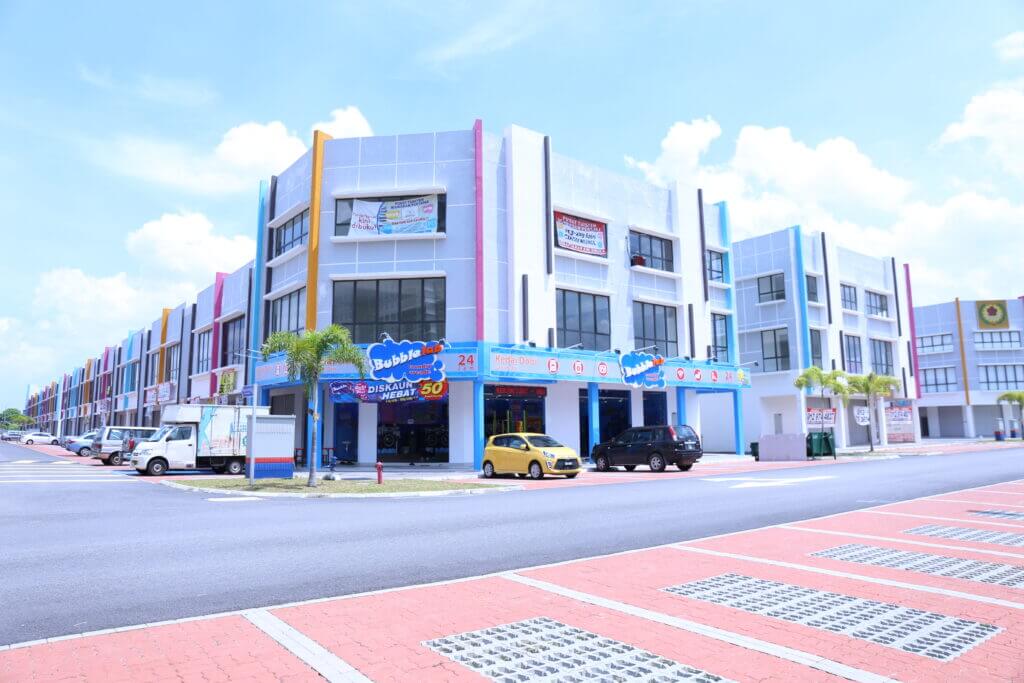
Bubblelab Laundry differentiates itself by providing an exceptional customer experience — prioritizing quality, speed and value. The company’s commitment to service, coupled with its franchising strategy, has led to steady growth throughout the country. The Bubblelab leadership team understood that the ability to scale maintenance processes would be key to expansion while maintaining the customer experience that was signature of the Bubblelab brand.
The organization traditionally relied on manual processes to support machine and store maintenance, which would not be sustainable as Bubblelab grew. In order to automate and optimize these processes, Bubblelab used Laserfiche enterprise content management to develop a digital maintenance management system.
The company selected Laserfiche for the ability to create custom electronic forms with an intuitive interface, recognizing the value in using various electronic forms and automated processes to replace paper and manual tasks. The Bubblelab team also saw potential in having access to Laserfiche’s Business Process Library, a collection of prebuilt processes that provide the downloadable tools necessary for rapid business process automation and deployment. Another important consideration for Bubblelab’s digital maintenance system was that it would be able to automatically route all important information to appropriate departments and employees for approvals, while also maintaining data security — something not possible with the company’s legacy ad-hoc processes and manual tasks.
Within a project timeline of just six weeks, the team was able to implement Laserfiche, train employees on the new system, and identify five workflows to digitize. The organization also identified key performance indicators for each process based on metrics including: entries in the defect logbook, corrective maintenance, preventive maintenance, material requisition and field staff clocking.
Today, Bubblelab outlet locations record all maintenance issues in their defect logbook integrated with dedicated Laserfiche workflows, through which service teams are automatically issued a corrective maintenance ticket containing project location, task information and deadlines. In the event a spare or replacement part is needed, rather than relying on emails and text messages to request materials, service teams can initiate a material requisition workflow through a Laserfiche Form to indicate the items needed, as well as the quantity and collection date. The information is automatically routed to stock managers for preparation, and team leads are then required to submit electronic documentation before and after the repair work to generate a service report, which includes maintenance descriptions, photographs, employee check-in/check-out times and overall project timeline. The service supervisor is able to run reports in Laserfiche that help schedule and distribute service tickets more effectively. As a result, a works schedule briefing that formerly took a half-hour daily has been eliminated.
Additionally, Laserfiche automatically sends employee hours to the human resources department for payroll calculations. The information also helps give managers a view of staff schedules and what service tickets are outstanding.
These digital workflows have helped maximize service team resources, including travel costs and time dedicated to scheduling and communication. Bubblelab’s digital maintenance management system also takes advantage of Laserfiche’s robust document management features including granular access controls and audit trail, enabling the leadership team to maintain information governance while improving efficiency and transparency for service teams.
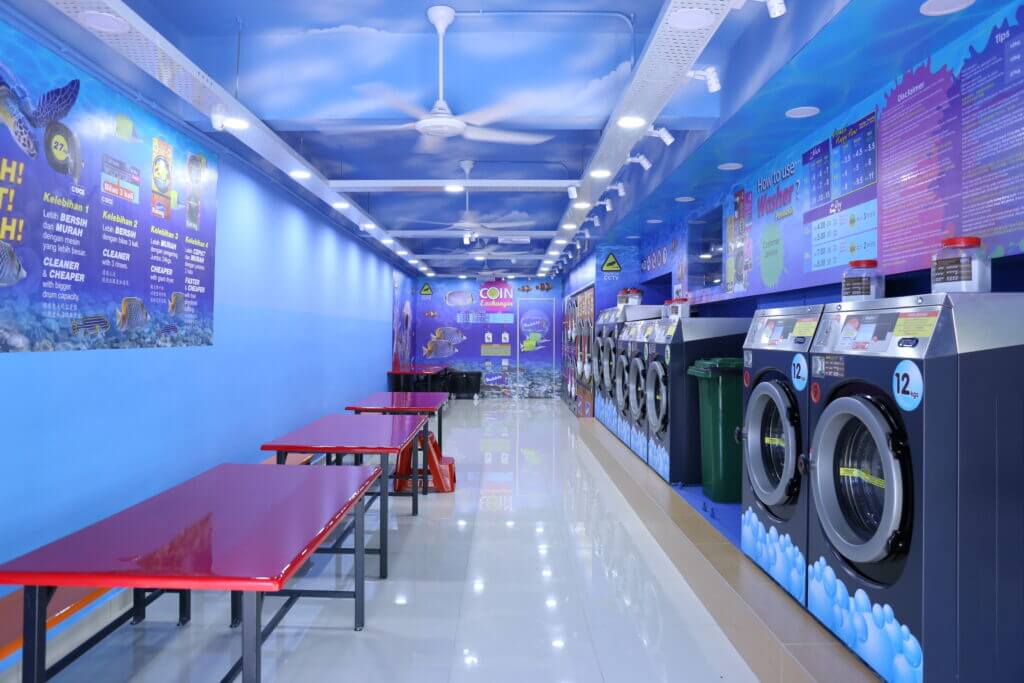
A Fresh Start for Digital Transformation
Bubblelab realized increased productivity and reports of a more positive work environment within just seven weeks of deploying the new digital maintenance management system. Since the project’s launch, the company’s Laserfiche implementation represents a cost savings of more than US$44,000, a figure projected to grow.
“The ease-of-use and level of detail possible through Laserfiche gave us the confidence that these solutions could handle any of our growing requirements,” said Wong. “We have really enjoyed designing forms and processes while identifying what other departments we could digitally transform. Laserfiche truly exceeded our expectations, improving company-wide project management in ways we did not originally anticipate.”
Bubblelab management is also now able to make more data-driven decisions, which positions the company for further growth. The organization is now seeing response times that are 73.8% faster than the original target of four days, and management now has the tools and information needed to continue optimizing processes. Beyond the initial digital workflows, collected information has also been used to manage inventory through the accounting system, reducing time spent on daily data entry. These extensive benefits have contributed to improved employee morale as a major driving factor for day-to-day operations, allowing greater control over operations to match with long-term expansion goals.

Every business’s day-to-day operations can be broken down to its compromising tasks and communications. While changes in the organization may cause a rift in the system, most of these daily processes – also called workflows – are routine and stay rather consistent despite outside disruptions or changes.
When businesses go beyond just performing these actions, and design new strategies or deploy innovative technologies to enhance their operations, they can achieve a higher level of efficiency and accuracy in business processes, while saving valuable resources. One of the best ways to achieve those goals is with workflow automation.
Read on to learn what workflow automation is, and how designing new workflows can improve business processes across the enterprise.
Workflow automation is the digitization and automation of business processes to reduce manual labor and process inefficiencies. In addition, workflow design refers to the creation of these digital workflows.
When a business process has many steps, it can be difficult to eliminate bottlenecks, miscommunications and even mishandling of information. Workflow automation aids in removing human error, speeding up reviews and approvals, as well as providing insight into how you can improve these workflows going forward.
There are a few things to consider before your first workflow design. Although any workflow initially designed to require multiple, manual steps are strong candidates, below are a few examples of processes that can benefit from automation:
A workflow automation software solution should improve productivity, consistency and transparency across the enterprise when you use it to design new or improved workflows. When considering workflow automation, look for a solution that can:
Workflow automation is an important step in an organization’s digital transformation. By optimizing processes across departments, businesses can save valuable resources while improving operational speed, accuracy and transparency both internally and externally.
For an overview of how process automation can help your organization streamline operations, watch our webinar, ECM 101: An Introduction to Process Automation Capabilities.
Ready to learn more about workflow automation and how to design the right solution for your organization? Download our Process Automation Buyer’s Guide.

Researching digital process automation platforms? Check out the G2 grid to compare top vendors.
Colleges and universities have always been at the forefront of imagining change. And King’s University College, an affiliate of Western University Canada, is no exception — having leveraged technology to navigate shifts in learning, culture, technology and student expectations, the college has relied on student success as its guide.
In recent years, the college recognized a need to become more digitally driven to improve collaboration across departments and provide more responsive services to students. Using Laserfiche enterprise content management (ECM) to digitize student forms and automate business processes in various departments across campus, King’s University College completely changed the way that departments communicate with each other and with students. This digital transformation prioritized student needs over time-intensive paperwork and manual processes. With the increased efficiency, King’s continued to provide excellent service to its applicants while managing a 49% increase in applications. In addition, King’s recruited more qualified students by increasing its admission requirement from 75% to 79%. With the higher average, more students were successful and retention increased over all years.
Founded in 1954, King’s University College prides itself on maintaining internationally recognized academic programming, comprehensive student services and outstanding faculty, all while keeping class sizes small so that students receive the best possible education. In 2011, King’s began to look for a system to digitize student files, giving the departments a better way to manage student information and align the student experience with the world-class education for which the college was known.
With the help of Ricoh Canada, one of the college’s workplace technology solution providers, King’s University College implemented Laserfiche, starting in Enrolment Services.
“The initial idea was to have files stored electronically,” said King’s University College Associate Registrar Tracy Cunningham. “Although our campus is fairly compact, many of the student service departments are spread throughout different buildings. There was a lot of singular paper files moving between one office or another, making it difficult to track down at times.”
More departments — including academic counselling services offered by the Academic Dean’s Office — soon followed, digitizing their student files as well. The electronic access was a boon to King’s efficiency and reduced the risk of lost documents while en route to other buildings or departments. With institutional records newly digitized, staff looked for more ways to deliver a more modern, streamlined experience to students.
After attending the Laserfiche Empower conference, a group of King’s department leaders were inspired to explore the functionality of Laserfiche Forms. With Ricoh’s help, and over the span of just a few months, Enrolment Services was able to replace all paper admissions forms with electronic ones created in Laserfiche, and eliminated manual routing and other repetitive, manual tasks using Laserfiche business process automation.
“Everything is managed electronically in Laserfiche,” said Admissions Coordinator and Liaison Robin Ellis. “Admissions letters are automatically sent out to the student and all documents are archived in Laserfiche. We’re also able to go back and audit the workflows, to see what actions were taken and when. We saw what was possible at the conference, and just kept coming up with more ideas from there.”
“The King’s team has had a clear vision for using digital transformation to enhance the student experience since they began working with Ricoh Canada over five years ago,” said Eric Fletcher, VP of Marketing for Ricoh Canada. “Their initiatives have since gone beyond storage and retrieval, and we have been excited to partner with them to implement innovative electronic forms, online student services and integrations that give King’s students and employees access to the data and processes they need to be successful.”

Since COVID-19 forced many organizations to shift to remote work, King’s has found further value in Laserfiche beyond improved efficiency.
“We ended up exceeding our enrolment goal this year, and I honestly don’t know how we could have managed admissions through a pandemic — with everyone working from home — without Laserfiche,” said Ellis. “We couldn’t have timed it better. The admissions form went live this year, and we were able to use it for this fall semester.”
“In March, our whole world changed — we were at the peak of our admissions cycle when we suddenly had to do everything online,” added Cunningham. “Fortunately, we put our summer academic orientation — which all our first years go through — online. We created one-on-one course counselling sessions allowing new-to-King’s students the opportunity to meet with a counsellor and follow along on a Laserfiche form as we went through it with them. Copies were automatically emailed to students and routed to their folders. Having all these Laserfiche processes in place helped us provide a user-friendly experience for students. The feedback of students was excellent. Our personal approach online was supported by the Laserfiche form as well as the fast delivery of their registration and timetable documents.”
King’s benefited from having implemented digital solutions for admissions before the pandemic hit, however, staff continue to find new uses for Laserfiche even as employees continue to work from home, and faculty and students have transitioned to remote learning.
For example, Information Technology Services (ITS) used a Laserfiche form to securely distribute account information for a recently rolled out VoIP-based phone system, to avoid having to email individual passwords to staff. In addition, the ITS team was also able to quickly deploy a form that gave instructors a central place to sign up for webinars on pedagogy and curriculum when professors were faced with moving their courses online within days as a result of COVID. Pulling from the college’s authentication system, users are verified before they get access to these forms.
“Being able to authenticate makes a big difference that has saved ITS a lot of time,” said Systems Analyst Sheldon Lopes.
Other student-facing processes that have been transformed by Ricoh and Laserfiche include scholarship applications, which previously required students to conduct research scattered in different databases and submit duplicate paperwork if they wanted to apply for multiple scholarships. Today, an integration with Western University’s PeopleSoft ERP system enables the enrollment management team to manage the flow of information and pre-populate Laserfiche Forms with existing student data. The form creates a centralized experience for students to search scholarships by keyword, returning the scholarships for which the student is qualified. If the same information or documentation is required for multiple scholarships, the student only needs to enter or upload it once, and it is routed to the relevant scholarship applications. Once a decision is made on the scholarship, the integration enables an immediate update to the student’s information in PeopleSoft.
“This form is phenomenal, and really easy for students and staff,” said Ellis. “Laserfiche automatically sends scholarship information to the student finance office, and students can be automatically emailed if they receive a scholarship. It’s been a win-win for everyone.” With the new scholarship form, the number of student applications skyrocketed. In the past, King’s had difficulty having students apply. With this new success, King’s will look to Laserfiche to find more ways to automate the process.
Leveraging the Ricoh team’s knowledge and experience with Laserfiche has made a significant impact in how students interact with King’s, which may be most evident in the academic counseling department.
“We had students emailing our team with academic questions — and oftentimes they would email many members of our team with the same question,” said Academic Data and Operations Coordinator Thomas Gray. “As a result, response times were slow and inquiries were difficult to track.”
The academic counseling team worked with Ricoh Canada to develop an inquiry submission form in Laserfiche. Now, students submit the form with their question and it is automatically triaged to a specific team member based on student information in King’s student database that is automatically populated in Laserfiche Forms.
“This enabled us to manage the workload and improve our student service,” Gray added. “King’s also has students from across Canada and around the world. We found that international students can connect to us and communicate seamlessly through Laserfiche Forms.”
The academic counseling department also collected and analyzed process information and reporting dashboards created using Laserfiche Forms to inform decision making. They were able to identify certain inquiries as more common than others, enabling them to better allocate resources toward responding to those inquiries. The team also noticed the times during which students preferred to contact them, and as such adjusted the department’s hours to better accommodate student schedules. The impact of insuring that inquiries are only received once, and immediately are directed to the right person was huge. The change in office hours was applauded publicly by the King’s University College Student Council as a result of the students’ appreciation.
King’s use of Laserfiche and Ricoh team support has facilitated a campus-wide digital transformation, which aims to enable King’s to adapt and respond to change, facilitate ongoing improvement and maintain the flow of communication.
“Digital transformation is letting people break down the digital siloes that they didn’t know existed. We know that we have one true data source, and we can truly share information. We’ve seen a reduction in error rates that comes with data entry, and don’t have to worry about what information is the most updated.”
—Manager of Infrastructure and Digital Pedagogies David Thuss.
“It helps us communicate as a campus in real time,” added Cunningham. “Laserfiche has helped us function faster, more collaboratively, and has positively affected our student retention.”
Since 2012, King’s has increased its applications, its admissions average and its student retention. The shining achievement is an increase of 15% in student enrolment this year in the midst of a pandemic. With the majority of universities in the region seeing a decrease in enrolment and many smaller institutions (like King’s) facing financial difficulties including deficits and staff reductions, King’s has been able to achieve significant milestones through its Laserfiche initiatives, Ricoh partnership and digital transformation efforts.
“We are constantly looking to support students in a way that’s more efficient so we can focus on program planning or retention work,” said Gray. “We can use our time more wisely, and do more meaningful work. This meaningful work creates an enriching experience for all of our community-students, staff and faculty.”
The Papua New Guinea Department of Education (DOE) created a completely digital Requisition Task Management System using Laserfiche Forms. Modernizing the formerly paper- and manual task-driven process was a significant step in the department’s digital transformation journey, which expedited purchase requisitions and shortened the time it took to get approval to purchase essential supplies, services and resources for the department.
“As we are such a large organization, processing claims and funding requests was formerly a highly manual and time-consuming process,” said Papua New Guinea DOE Assistant Secretary Thomas Podarua. “Laserfiche is a valuable technological tool, helping us take control and streamline our many business processes so that we can dedicate more resources to addressing the education needs of the nation.”

Since implementing Laserfiche, the DOE continues to digitize and automate additional business processes, reclaiming time for staff to focus on the department’s mission of improving the quality and participation in the educational system at a national and local level.
The DOE initially implemented Laserfiche in 2019 as its primary document management system. As the organization looked to modernize core business processes, DOE information communication technology and procurement staff learned that Laserfiche Forms could help streamline and simplify some of the DOE’s most complex business processes, starting with purchase requisitions.
Prior to implementing Laserfiche, purchase requisition applications were paper forms passed between department heads to higher officials for review. Covering a wide range of parameters and categories, these forms served the entire organization, reaching the highest authority of the DOE for final approval and sanctioning of funding claims. The approval process often took several months and could take up to a year due to a dependence on paper and manual tasks. Additionally, the risk of the paper forms getting misplaced or incorrectly filed was high, and individual requisitions were impossible to track with very little capacity for follow-up by the original requesting officers.
The DOE worked with its Laserfiche solution provider, Digitec ICT, to develop the new Requisition Task Management System with the goal of digitizing and automating requests submitted from various organizational units.
“This was a very complicated business process involving a number of claims categories, with a different workflow for each one,” said Podarua. “We needed a single system that was granular enough to handle these complexities for the entire organization on the front end and back end.”
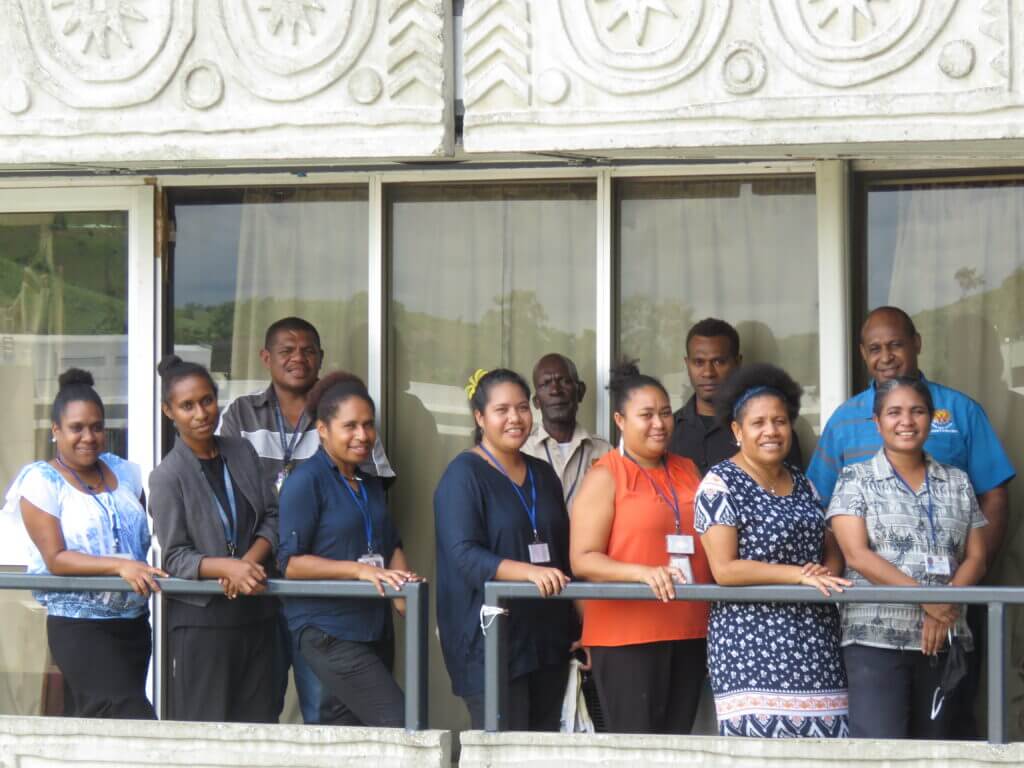
All employees can now submit purchase requisition applications through a Laserfiche electronic form. Once submitted, requests are automatically routed to the relevant business unit based on variables such as different claims categories. Requisition applications are reviewed, approved or rejected by the relevant personnel, and all documentation is managed in the Laserfiche repository.
The DOE took its digitization efforts further by automating the correspondence request process with Laserfiche Forms. Previously, correspondence requests often took months to complete and were difficult to monitor, requiring a substantial amount of paper. A dedicated Laserfiche Forms process captures a wide range of details related to correspondence, including relevant dates, responses and personnel involved, to optimize how each case is monitored and tracked, sending automated notifications to project managers upon completion of every major task. Checks for approved claims are also issued through a dedicated Laserfiche Form, creating an end-to-end request and approval solution for the department’s needs.
Since deploying the new Requisition Task Management System, the DOE has taken a major step in its digital transformation journey. In addition to modernizing the experience for staff who no longer need to complete and submit applications on paper, the DOE improved accountability: Deadlines are assigned to each task, and the original requester can now monitor the status of their requisition application. The DOE built on the success of its first Laserfiche Forms process by digitizing correspondence requests, and now issuing checks for approved claims through Laserfiche. Instead of taking months to resolve, correspondence requests can now be processed within two weeks.
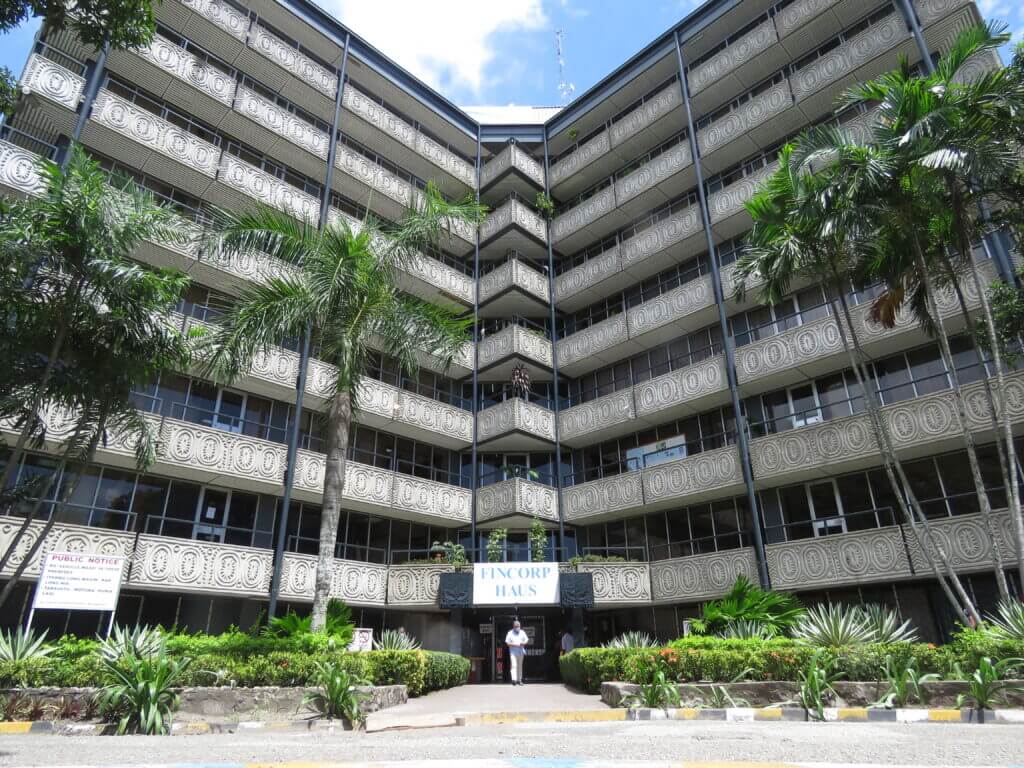
The DOE’s Requisition Task Management System also generates automated reports that the DOE can use to evaluate the progress of tasks between departments, identify bottlenecks and make strategic decisions about process tasks and resources. The organization is developing automated business processes using Laserfiche to streamline and manage school registration, query management for instructors and for duty travel requests.
“Digital transformation is especially important for organizations in the education sector which often face underfunding and understaffing obstacles,” said Nirmal Singh, CEO of Digitec ICT. “The ease of implementation and flexibility of the Laserfiche system really helps streamline costs and productivity while supporting the broad educational efforts of the DOE.”
The DOE continues to optimize its processes and find new areas for digital transformation. To date, the organization has significantly reduced the turnaround time for requisition tasks, with most requests processed within a month. This has enhanced interdepartmental collaboration, improved project management organization-wide and saved valuable time and resources, which the DOE can redirect toward its commitment to improving the quality and delivery of education throughout Papua New Guinea.

The fast-changing economic landscape of the credit union industry has highlighted the importance for firms to leverage technology to meet customer needs.
Many credit unions that rely on legacy systems built around proprietary technology and manual processes have found it challenging to maintain and attract new members and stay ahead of the competition. Committed to putting its members first and continuously improving its service offerings, Dakotaland Federal Credit Union (“Dakotaland”) — a full-service, not-for-profit financial cooperative — has challenged the status quo, transforming traditional paper-based workflows to digitally transform its business. In 2004, the firm implemented a Laserfiche electronic document management system and has since expanded its use across its departments, while continuing to explore new ways to drive efficiency throughout the organization.
Dakotaland started with just 10 members in Huron, South Dakota, in 1935. In 2020, celebrating its 85th anniversary, the firm spans across 11 branches and serves nearly 40,000 members in 46 states. This growth further underscored the need to build more automated business processes in order to streamline information sharing and accelerate collaboration. “With Laserfiche, we can develop and assign tasks regardless of location, share that information easily across branches and automate notifications, and know exactly where we are in the process,” said Gina Hansen, vice president of product development at Dakotaland.
Additionally, increased regulatory burden, and a growing expectation of incorporating advanced technology solutions, have all presented opportunities for Dakotaland to acquire other small institutions to help these firms align their services with the evolving industry landscape. With the help of Laserfiche’s customizable technology solutions, Dakotaland has been able to continue providing the best possible service to its current member base while also growing its business.
Before implementing Laserfiche, Dakotaland’s information storage took the form of five rooms stacked with filing cabinets. The team realized it needed to store documents electronically to save space and avert document loss, while addressing recordkeeping requirements enforced by different regulatory bodies. These needs led Dakotaland to select Laserfiche for its robust electronic records management and automated workflow capabilities.
“Regulators and examiners expect us to document everything, requiring us to show proof of the firm’s work,” Hansen said. “Laserfiche helped us present all our data — including all mandatory details — in a format that leaves no room for error.”
The Laserfiche implementation enabled Dakotaland to digitize its records, while preserving record integrity and simplifying compliance processes. The efficiency driven by the Laserfiche initiative spurred the expansion of Laserfiche’s use in other projects aimed at improving the end-user experience and creating a stronger operational infrastructure across departments, including human resources, IT, insurance, mortgage, and more.
“Today, we heavily rely on Laserfiche for almost all our day-to-day operations, automating nearly 250 running workflows and almost 100 active forms processes,” Hansen said. “I do not believe there is any part of our organization that is not using Laserfiche in some capacity. While some forms and workflows are simple routing to logically file documents, others are utilizing the report feature to provide tracking ability, and some automate more complex processes such as our new hire or vendor management tracking process.”
While all departments within Dakotaland use Laserfiche in some shape or form, one department that has harnessed the great values of digital transformation is human resources.
Multiple teams across different departments are impacted whenever an employee is hired or terminated, or moves to a new department. To keep employees and teams informed, Dakotaland used Laserfiche to create an end-to-end solution to process employee and candidate records, and combat information loss. The platform streamlines the workflow through a new-hire checklist, comprising of analyzing applications, processing forms, sharing the database with the supervisors, helping them classify the applications, and developing a comprehensive pool of interview candidates. By automating the HR processes, the firm is able to save countless hours — allowing teams across a multitude of departments to focus on more client-facing services that require a human touch.
Most recently, the firm also used Laserfiche to automate a key process for its now-virtual Employee Enrichment Day — a team-building program, where the firm engages in activities that enhance staff connection and give employees an opportunity to learn about each other. During this day, the team works on a spotlight commemoration developed and assigned to the staff in Laserfiche Forms with questions directed to the respective personalities of the employees. The answers then develop a quiz that goes back to all employees, and within that process, the team uses Forms to analyze and file the answers. Automating the process with Laserfiche saves the firm around 10 to 15 hours, analyzing the scores of more than 160 employees in one day.
COVID-19 has compelled firms across different industries to challenge their technological capacities and reevaluate their resources. When the pandemic first hit, more than 30 team members at Dakotaland were deployed to work remotely within a week — enabling the firm to fully rely on its digital repository of data and its automated workflows. The seamless transition enforced business continuity at Dakotaland, allowing for uninterrupted services to its members, even in an unpredictable environment.
One of the biggest hurdles to adopting a new system can be identifying areas that need improvement and processes that can be streamlined. The management at Dakotaland takes pride in driving a thorough observation across the firm to determine loopholes and encourage innovation that can help avoid system failures and boost operational competency. With support from the executive team, the firm leverages its Laserfiche champions, who lead the technology shift across different teams and help them adopt new solutions. These champions play a critical role in training employees about the new processes and identifying unique ways in which Laserfiche can be customized to further enhance productivity and maximize the firm’s investment in Laserfiche technology.
“There are always new challenges and concerns that the credit union industry has to address,” Hansen said. “However, our confidence in Laserfiche’s capacity has encouraged us to identify and resolve any technology challenges upfront and continue to enhance our competitive edge in the industry. I am excited to see what innovation is in store for our collaboration and how we can collectively revolutionize the credit union space.”
SITUATION
• New account opening process depended on paper forms and direct mail
• Legacy new account opening process could take from three to seven days
• Difficulty tracking activities taken on documents resulted in challenges with audit preparation
SOLUTION
• Accelerated new account opening process from one week down to 30 minutes
• Simplified audit preparation
• 40,000 hours of annual time savings
An independent investment advisory firm that provides financial consulting services to more than 4,000 households with approximately $2 billion in assets under management needed a way to expedite client services.
The firm sought out document management technology to automate its new account opening process. The legacy process was paper-based, requiring the firm to prepare stacks of paper forms and individually mail them between advisors, a client service representative, the firm’s cashiering department, the client and the custodian. This typically took three to seven days and often delayed important client transactions.
“New account documents are extremely time sensitive. At times, we would have to interrupt advisors during meetings to get a signature,” said the firm’s IT director. “We were looking for a paperless system with efficient workflow, SEC and FINRA compliance and a strong integration capability.”

After a demonstration of Laserfiche software, the firm’s IT team felt that Laserfiche’s configurable workflow tools could easily address their operational needs.
To automate account opening, the firm integrated Laserfiche with DocuSign, its Tamarac customer relationship management (CRM) system and Laser App. By integrating these systems, client paperwork can be reviewed, signed and finalized in under half an hour:
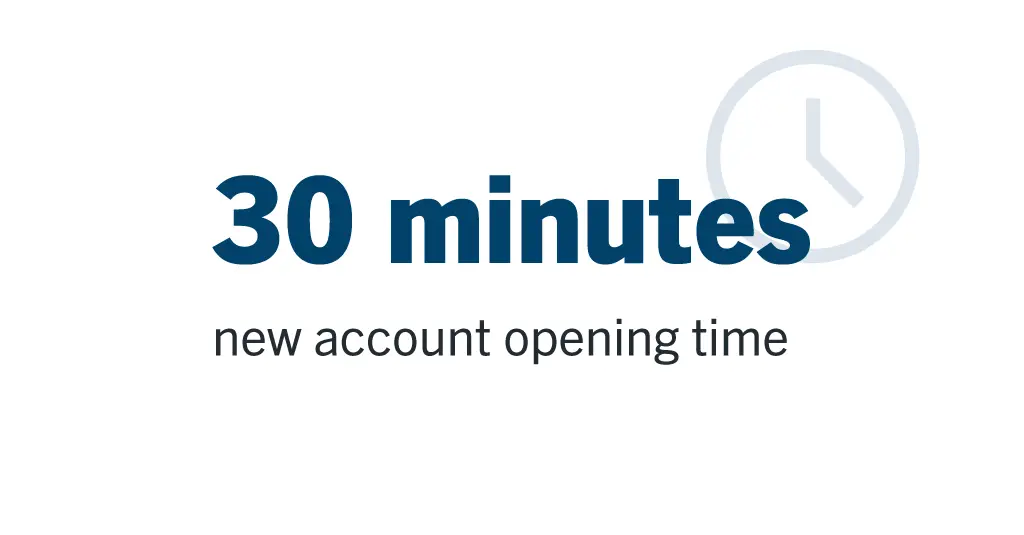 Compared to the legacy system, this new process has generated a week in time savings. The process is not only quick, but enhances personnel accountability from start to finish.”
Compared to the legacy system, this new process has generated a week in time savings. The process is not only quick, but enhances personnel accountability from start to finish.”
“If a document that requires review sits for more than 24 hours, the system emails a reminder to the responsible person,” said the IT director. “If the same document sits for more than 72 hours, the system emails that person’s boss.”
Improving operations was only part of the firm’s information management overhaul. The firm also needed comprehensive compliance functionality to meet the strict standards of its industry.
“The SEC and FINRA require that firms use a certain type of document management technology, such as unalterable database software,” said the IT director. “Our research showed that Laserfiche’s technology is not only the most flexible, but also offers the option to use numerous add-on features.”
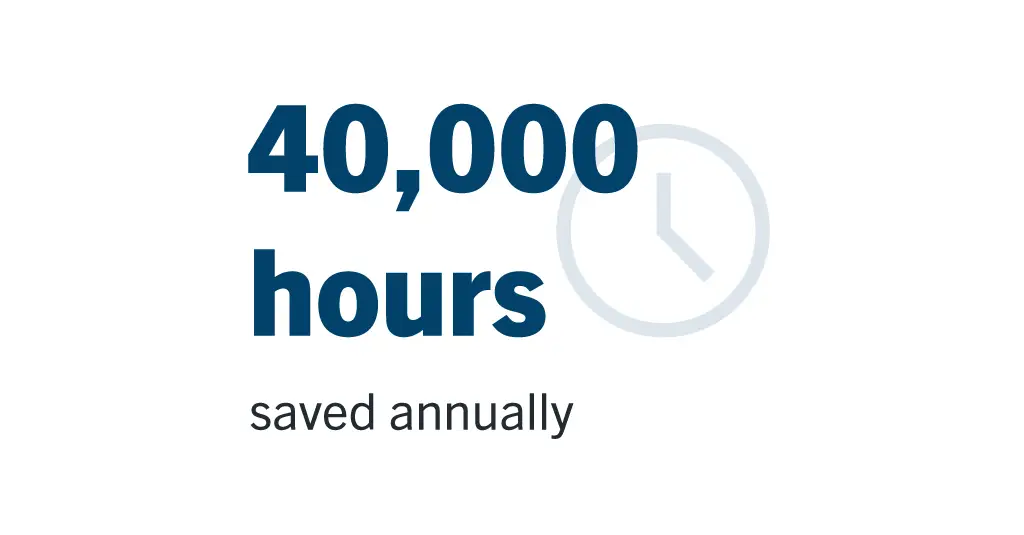 One feature that simplifies audit preparation is Laserfiche’s event log capability, which tracks the creation, deletion and modification of documents.”
One feature that simplifies audit preparation is Laserfiche’s event log capability, which tracks the creation, deletion and modification of documents.”
“Our system logs every possible interaction with a document,” said the IT director. “Even if a document is deleted, it is still available in the Laserfiche repository and we can see who modified it.”
The firm’s DocuSign integration also verifies the identity of a document’s signer. Detailed security questions, social security verification and access code protection maintain the integrity of client transactions and prevent fraud.
 “It’s pretty astounding when you consider the time savings,” said the IT director. “We estimate that Laserfiche saves us up to one hour per document. “Given the firm’s estimated average of 165 documents processed per day, Laserfiche produces an annual time savings of roughly 41,415 hours.”
“It’s pretty astounding when you consider the time savings,” said the IT director. “We estimate that Laserfiche saves us up to one hour per document. “Given the firm’s estimated average of 165 documents processed per day, Laserfiche produces an annual time savings of roughly 41,415 hours.”